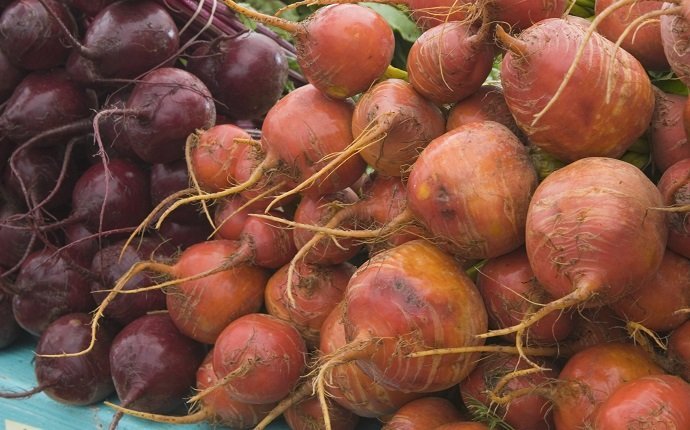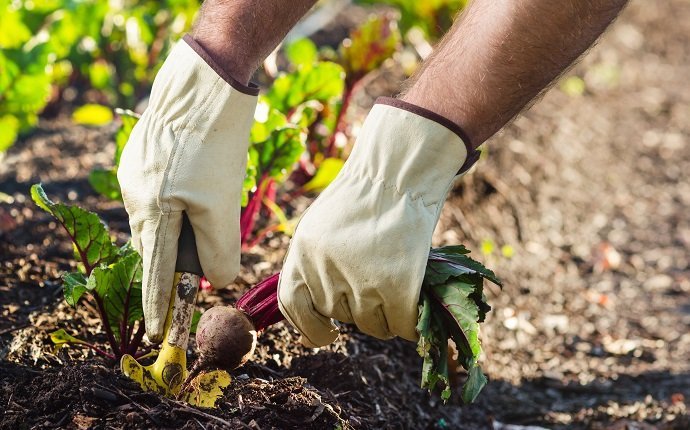
Feeling the Beet
When I think back to when I was a young, I recall flashes of warm happy summer days. Many of those memories are of sowing and harvesting beets with my mom and sister. I also have fond memories of my mother preparing those same beets. After scrubbing the beets and trimming the tops and bottoms off, my mom would give them a 15 boil, slice them and then put them in a bowl with apple cider vinegar and salt. I want to say that all the goodness beets offer are why I still eat and enjoy them today. However, it’s really the warm earthy taste of summer memories that make me truly enjoy this simple, yet elegant root vegetable.
While my memories circle around the common beet species (Beta vulgaris L.), and using it simply as a root vegetable for eating, there are other varieties and additional uses. All beets reside within the plant family, Chenopodiaceae (Goosefoot family). Within the common beet species, there are 2 subspecies: beet (macrocarpa [Guss.] Thell) and chard (cicla [L.] W.D.J. Koch). The beet is often referred to as beetroot. This comes from the fact that the taproot is most often the part consumed, although the leaves can be quite tasty too. When sugar or juice is extracted from beets, these processes also uses the taproot. The chard subspecies is often used for its leafy greens.
Even though I remember beets since the beginning of my time, I know they did not originate in my mother’s garden. In fact, beets can be followed all the way back to ~c.2600 B.C.E. at sites in Egypt and Neolithic times in the Netherlands. While the remains of beets found at these sites show that beets have been around for a substantial amount of time, it does not tell us whether these were wild beets or ones that had been cultivated. However, later (8th century B.C.E.) Greek writings show cultivation of the beet was occurring in the Mesopotamia area (modern day Iraq, as well as parts of Kuwait, Syria, and Turkey). In the 1st century B.C.E., the chard variety was documented to have been cultivated in the Mediterranean area in Jewish and Roman literature. In the 18th to 19th centuries sucrose was discovered in beets and utilized to make sugar.
Keep the Heart Beeting
Beets come in a variety of colors including reds, oranges, and whites.

All beets offer a wide variety of nutritional benefits. A medium sized beet (82 grams) comes in at 35 calories, no fat, 1 gram of protein, and 8 grams of carbohydrates (2 grams of which is dietary fiber). Beets, as with many root vegetables, have higher carbohydrate levels than other vegetables, which offer a way to consume healthy carbohydrates for energy. Beets also provide vitamin C, iron, magnesium, folate (B-9), potassium, manganese.
Beets are also high in nitrates, although this can be soil dependent. To understand more about soil health, click here: https://www.permaculturenews.org/2016/04/01/save-our-soils/. However, in general beets do contain higher levels of nitrates, which are beneficial to us.
Nitrates, which are converted to nitrites in our bodies, and then eventfully to nitric oxide in our blood, can relax our blood vessels, increase oxygen uptake, and work to inhibit platelet adhesion. These properties allow for lowered blood pressure, improved athletic performance, and reduced untimely clotting.
Word of Caution
As mentioned before, beets contain nitrates. Nitrates can trigger migraines in sensitive individuals and therefore should be avoided by those prone to migraines. To learn about growing your own plants for medicinal uses, including treatment of migraines, click here: https://www.permaculturenews.org/2015/03/27/how-to-grow-a-medicine-cabinet/
Nitrate, once converted to nitrite can form nitrosamines, which have been shown to be carcinogenic in animal studies. However, when this occurs the source of the nitrate is usually from processed meats, such as hotdogs and bologna. Beets, as with many nitrate containing fruits and vegetables, also contain vitamin C, which naturally inhibits the nitrosamines formation, and therefore beets are not thought to be a carcinogen. Beets also contain the pigment betacyanin. This too inhibits cancerous cell growth, and reduces the carcinogenic effects of nitrosamines.
Beets contain oxalates, which have been shown to worsen kidney and bladder stone formation. Therefore, those prone to stone development should avoid beets.
As always, with any medical condition or question, consult your healthcare provider.
And the Beet Grows On
Beets are a cool season crop, with a long growing season. They can survive frosts and near freezing temperatures. They like soils above pH 6, or their growth can be stunted. They prefer to be planted in moist soil that has reached 50°F. They may be planted in the spring or fall, as long as the air temperature stays below 75°F and they are kept from drying out.

When planting beets, be sure to do so about 1-2” apart and then thin them later to 3-4” apart. Thinning can be done by pinching or trimming them off, so as not to disturb the beetroot. To grow well, beets need properly nourished soils that contain high levels of phosphorus. Nitrogen is not as much of a concern, since too high of levels can cause sprawling greens and tiny taproots. If appropriately cared for and tended too, beets will be ready to harvest in 2-3 months, just don’t let the tops get above 6”. Also, watch for pests, such as Mexican beetles. Plants such as rosemary and marigolds can be planted in your garden to ward off these beetles and other pests.
March to the Beet of Your Own Recipe
Once you pick your beets store them in the fridge, without the tops, for up to a week. You may eat the tops if desired, as they are full of nutrients too. To enjoy beets, there is no end to the things you can make from them, including (but definitely not limited to!) salads, roasted side dishes, pizza crust, and hummus. Here are a couple recipes to tryout out with your next crop of beets.
Avocado and Beet Salad
Ingredients for Salad:
6 medium beets (any color), roasted* and cut into wedges
2-3 avocados, skin and pits removed and cut into slices
Salt
Freshly ground black pepper
1 tablespoon red wine vinegar
1 tablespoon olive oil
Ingredients for Dressing:
¾ cup olive oil
1 green onion, finely chopped
2 tablespoons white wine vinegar
1 tablespoon of fresh lemon juice
1 tablespoon of fresh orange juice
1 tablespoon chopped parsley
¼ teaspoon lemon zest
¼ teaspoon orange zest
Directions:
Place beets in a bowl, and season with salt and pepper
Add red wine vinegar and 1 tablespoon olive oil, and toss gently
In a separate bowl, combine onion with white wine vinegar, lemon and orange juices, and pinch of salt Let sit for 15 minutes
Whisk in ¾ cup olive oil, and stir in parsley and zest
Adjust seasonings to suit your taste
Arrange avocadoes on a plate and season with salt and pepper
Arrange beets on top, and drizzle with dressing
Enjoy!
Beet and Cashew Hummus
Ingredients:
2 -3 medium sized beets (any color) roasted* and coarsely chopped
1 cup cashews**
2 garlic cloves, smashed, diced, and sautéed
¼ cup olive or avocado oil
¼ cup lemon juice
½ teaspoon salt
¼ teaspoon cayenne pepper
Directions:
Combine all ingredients into a food processor
Blend until smooth
If mixture is too thick slowly add more oil or water while processor is running
Serve hummus with crudités and enjoy
To roast beets
Preheat oven to 400 degrees F
Trim, peel, and wash beets
Cut them to desired shape and size
Put them in a baking dish and toss with a little bit of oil
Roast 45 to 60 minutes, until tender. Time will vary based on size of beet cuts
Roasting beets will add flavor and texture to your recipes
**Cashews should be purchased “raw”, soaked in salted water for no more than 6 hours, drained and rinsed and then roasted in the oven at 165 degrees F for at least 12 hours or until dry and crispy. Stir them occasionally while in the oven. This will improve digestibility and nutrient availability.
Keep Marching to the Beet
Perhaps your fondest and first gardening and vegetable memories don’t include beets. However, with all the nutritional benefits beets have to offer, along with their ease of growing, and simplicity and versatility in preparation, beets should become a staple within your garden and your diet. So, while it’s nice to travel down memory lane, there is also no time like the present to allow these beautiful dark red, deep golden, or eye-catching white root vegetables to find a home in your garden this planting season and into the future.
References
Better Homes and Gardens. 2017. Meridith Corporation. Beet. https://www.bhg.com/gardening/plant-dictionary/vegetable/beet/
Dubois, S. April 23, 2015. Livestrong.com. Fruits and Vegetables that are High in Nitrates. https://www.livestrong.com/article/541308-fruits-vegetables-that-are-high-in-nitrates/
Engel, J. March 27, 2015. Permaculture Research Institute. How to Grow a Medicine Cabinet. https://www.permaculturenews.org/2015/03/27/how-to-grow-a-medicine-cabinet/
Lawton, G. April 1, 2016. Permaculture Research Institute. Save or Soils. https://www.permaculturenews.org/2016/04/01/save-our-soils/
Natural Resource Conservation Service. 2016. US Department of Agriculture. Beta vulgaris L. Common Beet. https://plants.usda.gov/core/profile?symbol=BEVU2
New World Encyclopedia.org. January 14, 2013. New World Encyclopedia. https://www.newworldencyclopedia.org/entry/Beet
Organic Facts. 2017. Organic Information Services Pvt Ltd. Health Benefits of Beets. https://www.organicfacts.net/health-benefits/vegetable/beets.html
Perkins, S. December 12, 2010. Livestroong.com. What are the Side Effects of Nitrates Used in Foods? https://www.livestrong.com/article/331925-what-are-the-side-effects-of-the-nitrates-used-in-food/
Self Nutrition. 2014. Self.com. Beets Raw. Nutrition Facts and Calories. https://nutritiondata.self.com/facts/vegetables-and-vegetable-products/2348/2












